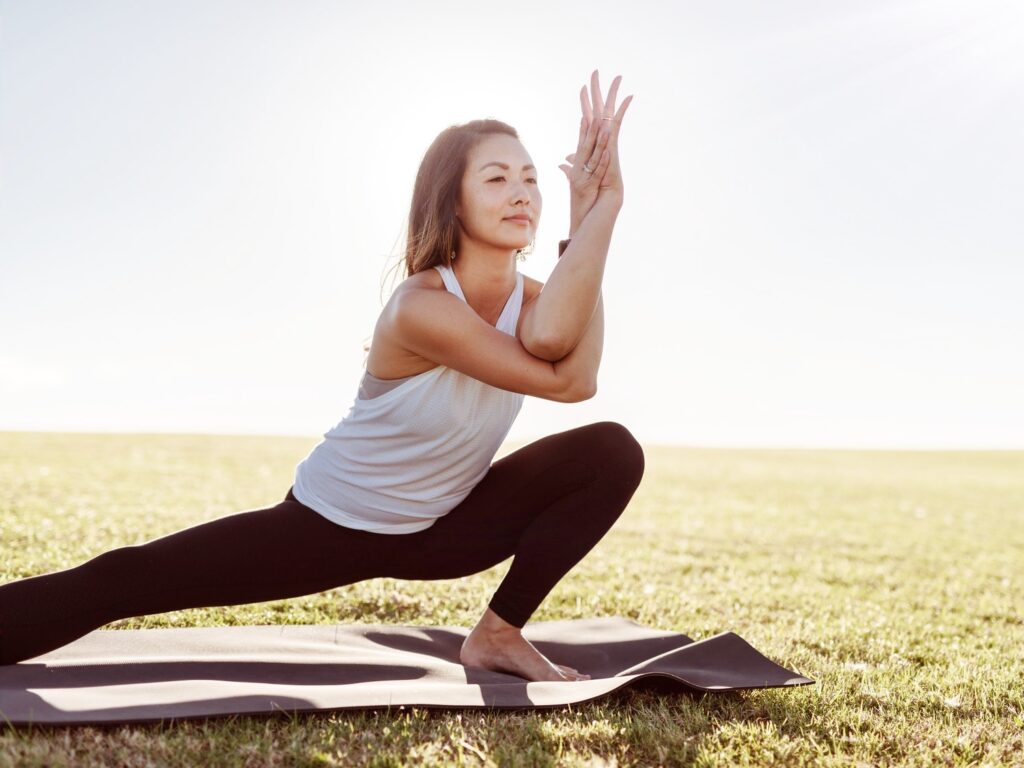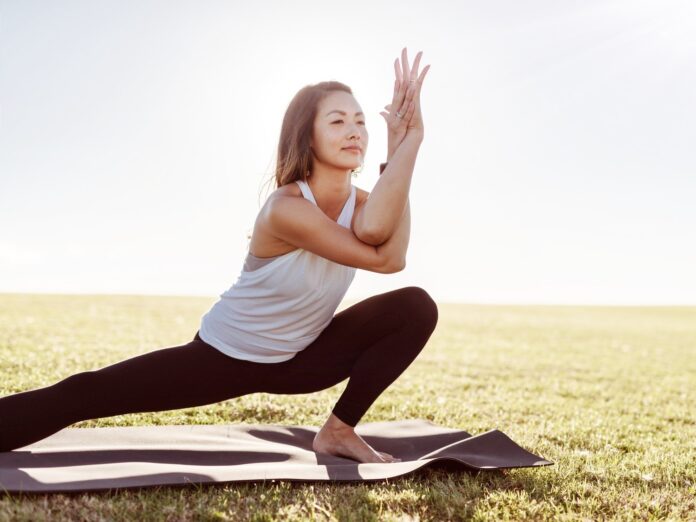30 benefits of stretching
Stretching is an activity that involves lengthening the muscles and improving flexibility. It has numerous benefits for people of all ages and fitness levels. Whether you are an athlete, office worker, or senior citizen, stretching can enhance your overall health and well-being. Here are 20 benefits of stretching:
Reduces Muscle Tension:
Stretching helps to reduce muscle tension, which can cause pain and stiffness. It loosens tight muscles and helps to release any knots or adhesions that may be present.
Improves Flexibility:
Regular stretching can increase flexibility and range of motion in the joints. This can enhance athletic performance and prevent injuries.
Enhances Athletic Performance: Stretching can improve athletic performance by increasing flexibility, range of motion, and muscle strength. This can lead to better endurance and speed.
Prevents Injuries:
Stretching can help to prevent injuries by improving flexibility and reducing muscle tension. It can also increase blood flow to the muscles, which can help them recover faster after exercise.
Increases Blood Flow:
Stretching increases blood flow to the muscles, which can improve circulation and help to deliver nutrients and oxygen to the tissues.
Reduces Stress:
Stretching can help to reduce stress by relaxing the muscles and reducing tension. It can also promote relaxation by slowing down the heart rate and breathing.
Improves Posture:
Stretching can improve posture by lengthening tight muscles and strengthening weak ones. This can help to prevent back pain and other postural problems.
Enhances Balance:

Stretching can enhance balance by improving flexibility and strength in the muscles that support the joints. This can help to prevent falls and injuries.
Reduces Back Pain:
Stretching can help to reduce back pain by loosening tight muscles and improving flexibility. It can also strengthen the muscles that support the spine.
Improves Circulation:
Stretching can improve circulation by increasing blood flow to the muscles and tissues. This can help to deliver oxygen and nutrients to the cells and promote healing.
Enhances Range of Motion:
Stretching can enhance range of motion in the joints, which can improve mobility and flexibility. This can make daily activities easier and more comfortable.
Reduces Muscle Soreness:
Stretching can help to reduce muscle soreness and stiffness by increasing blood flow to the muscles and tissues. This can speed up the recovery process after exercise.
Enhances Coordination:
Stretching can enhance coordination by improving flexibility and range of motion in the joints. This can help to improve balance, agility, and overall movement.
Improves Mental Health:
Stretching can improve mental health by reducing stress and promoting relaxation. It can also enhance mood by releasing endorphins, which are natural painkillers and mood boosters.
Reduces Risk of Chronic Diseases: Stretching can help to reduce the risk of chronic diseases by improving circulation, reducing inflammation, and promoting relaxation. This can help to prevent conditions such as heart disease, diabetes, and obesity.
Increases Energy:
Stretching can increase energy levels by improving circulation, reducing muscle tension, and promoting relaxation. This can make you feel more alert and focused throughout the day.
Enhances Sleep Quality:
Stretching can enhance sleep quality by promoting relaxation and reducing stress. It can also reduce muscle tension, which can make it easier to fall asleep and stay asleep.
Improves Digestion:

Stretching can improve digestion by promoting relaxation and reducing stress. It can also stimulate the muscles in the digestive system, which can help to move food through the body more efficiently.
Enhances Overall Health:
Stretching can enhance overall health by improving flexibility, range of motion, and muscle strength. It can also reduce the risk of injury, improve circulation, and Improves Joint Health: Stretching can improve joint health by increasing flexibility and range of motion. This can help to prevent joint stiffness and reduce the risk of arthritis.
Promotes Relaxation:
Stretching can promote relaxation by slowing down the heart rate, reducing muscle tension, and promoting deep breathing. This can help to reduce stress and improve mental health.
Enhances Immune System:
Stretching can enhance the immune system by improving circulation and reducing stress. This can help to boost the body’s natural defenses against illness and infection.
Reduces Headaches:
Stretching can help to reduce headaches by improving circulation and reducing muscle tension. This can help to alleviate tension headaches and promote relaxation.
Improves Post-Exercise Recovery: Stretching can improve post-exercise recovery by reducing muscle soreness and stiffness. It can also promote relaxation and improve circulation, which can help the muscles recover faster.
Promotes Mind-Body Connection: Stretching can promote the mind-body connection by encouraging mindfulness and deep breathing. This can help to improve mental health and enhance overall well-being.
Improves Cardiovascular Health: Stretching can improve cardiovascular health by reducing blood pressure, improving circulation, and promoting relaxation. This can help to reduce the risk of heart disease and stroke.
Enhances Sex Life:
Stretching can enhance the sex life by improving flexibility, strength, and range of motion in the muscles used during sexual activity. This can lead to more enjoyable and comfortable experiences.
Improves Balance and Stability:
Stretching can improve balance and stability by strengthening the muscles that support the joints. This can help to prevent falls and injuries, especially in older adults.
Reduces Anxiety and Depression:
Stretching can help to reduce anxiety and depression by promoting relaxation and reducing stress. It can also improve mood by releasing endorphins, which are natural mood boosters.
Enhances Body Awareness:
Stretching can enhance body awareness by encouraging mindfulness and deep breathing. This can help to improve posture, balance, and overall movement.
In conclusion, stretching has numerous benefits for people of all ages and fitness levels. It can improve flexibility, range of motion, muscle strength, and overall well-being. It can also reduce the risk of injuries, chronic diseases, and mental health conditions. Incorporating stretching into your daily routine can lead to a healthier, happier, and more active lifestyle.
stretches to do everyday
The stretches you should do every day can vary depending on your individual needs and goals, but here are some general stretches that can be beneficial for most people:
Neck stretches:
Tilt your head to one side, bringing your ear towards your shoulder, and hold for 15-30 seconds. Repeat on the other side. You can also do front and back neck stretches by gently tucking your chin towards your chest and then tilting your head back.
Shoulder stretches:
Reach one arm across your chest and hold it with the other arm, pulling gently to deepen the stretch. Repeat on the other side. You can also do overhead shoulder stretches by clasping your hands behind your back and lifting them up towards the ceiling.
Chest stretches:
Stand with your arms extended behind your back, clasping your hands together, and lift your arms up towards the ceiling. Hold for 15-30 seconds.
Hamstring stretches:
Sit on the floor with your legs straight out in front of you and reach forward towards your toes. Hold for 15-30 seconds.
Hip flexor stretches: Kneel on one knee and lunge forward, keeping your back straight and your pelvis tilted forward. Hold for 15-30 seconds, then repeat on the other side.
Calf stretch:
Stand facing a wall and place your hands on the wall. Step one foot back and press your heel into the ground to stretch your calf muscle. Hold for 15-30 seconds, then repeat on the other side.
Remember to stretch gently and gradually, avoiding any bouncing or jerking movements that could cause injury. If you have any specific health concerns or conditions, it’s always a good idea to check with your healthcare provider before starting a new stretching routine.
Daily Benefits.
Stretching can be an important part of maintaining flexibility, mobility, and overall physical health, but whether or not you need to stretch every day depends on your individual circumstances.
For some people, especially athletes or those who engage in regular physical activity, stretching every day can help prevent injury and improve performance. It can also be beneficial for people who have a sedentary lifestyle or spend a lot of time sitting, as stretching can help counteract the negative effects of prolonged sitting.
However, for others, stretching every day may not be necessary or even advisable. Some people may have medical conditions or injuries that make certain stretches uncomfortable or harmful, and for them, a targeted stretching routine prescribed by a medical professional may be more appropriate.
Ultimately, the decision of whether to stretch every day or not depends on your individual needs, goals, and physical condition. It is always best to consult with a qualified healthcare professional or fitness instructor to determine the most appropriate stretching routine for you.
What hormone is released when stretching?
When you stretch, your body may release a variety of hormones and neurotransmitters, including endorphins, dopamine, and serotonin. These chemicals can help to reduce stress, improve mood, and promote relaxation.
One hormone that is particularly important in the stretching process is called growth hormone. This hormone is released by the pituitary gland and plays a key role in the growth and repair of muscles, bones, and other tissues. Growth hormone is also important for maintaining a healthy metabolism and body composition.
stretches has been shown to stimulate the release of growth hormone in the body, which may help to promote muscle growth and repair, as well as improve overall physical performance. However, more research is needed to fully understand the effects of stretching on hormone levels and overall health.
Why do I shake when I stretch?
Shaking or trembling during stretches can happen for a few reasons. One reason is that your muscles may be weak or fatigued, and shaking is a natural response as your body tries to activate and recruit more muscle fibers to help with the stretch.
Another reason for shaking during stretching is that your muscles may be tight or have knots or trigger points. These can cause discomfort or pain during stretching, and the shaking may be a reflexive response as your body tries to release the tension or pain.
Finally, shaking during stretches may be a result of the stretch itself, particularly if it is a new or unfamiliar movement. Your body may be adapting to the new motion, and shaking can be a natural response as your nervous system adjusts to the stretch.
In general, mild shaking or trembling during stretches is normal and usually nothing to be concerned about. However, if you experience significant pain or discomfort during stretching, or if the shaking persists even after you’ve stretched regularly for some time, it may be a good idea to consult a healthcare professional or a qualified fitness instructor to help you determine the cause and identify any necessary adjustments to your stretching routine.
Should I stretch before bed?

Stretch before bed can be beneficial for some people, as it can help promote relaxation, reduce muscle tension, and improve overall sleep quality. stretches can also be a good way to release any built-up stress or tension from the day and promote a sense of calm before going to bed.
However, the type of stretch you do before bed is important. stretches that involves vigorous or intense movements may actually have the opposite effect and increase your heart rate and energy level, making it more difficult to fall asleep. Instead, focus on gentle, relaxing stretches that help to release tension and promote relaxation.
Examples of good stretches to do before bed include gentle yoga poses, simple stretches for the hips, hamstrings, and lower back, and deep breathing exercises. You may also want to incorporate some mindfulness or meditation practices into your pre-bedtime routine to help further promote relaxation and reduce stress.
Ultimately, whether or not you choose to stretch before bed depends on your individual needs and preferences. If you find that stretching helps you to feel more relaxed and sleep better, then it may be worth incorporating into your routine.
Does stretches tone your body?
stretches alone is not typically considered an effective way to tone your body. While stretches can help improve flexibility and range of motion, it does not generally build significant muscle mass or strength.
To tone your body, you generally need to engage in activities that build muscle, such as weightlifting, resistance training, or bodyweight exercises. These types of activities create microscopic tears in your muscle fibers, which then repair and rebuild stronger and more toned. In addition, cardiovascular exercise can help to burn excess body fat, which can help to reveal the muscle tone underneath.
That being said, stretching can be an important complement to strength and cardio training. stretches can help to improve your overall mobility and flexibility, which can enhance your ability to perform exercises with proper form and prevent injuries. Incorporating stretches into your fitness routine can also help to reduce muscle soreness and stiffness, allowing you to recover more quickly between workouts.
In summary, while stretching alone may not tone your body, it can be a valuable part of a well-rounded fitness routine that includes strength and cardiovascular exercise.


















